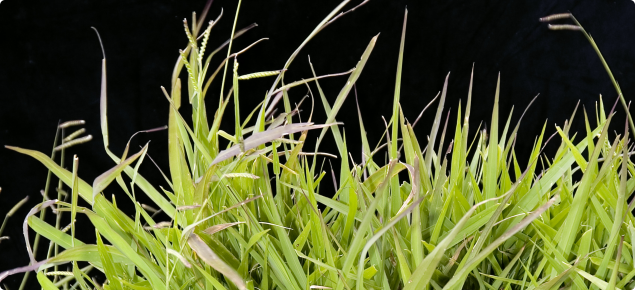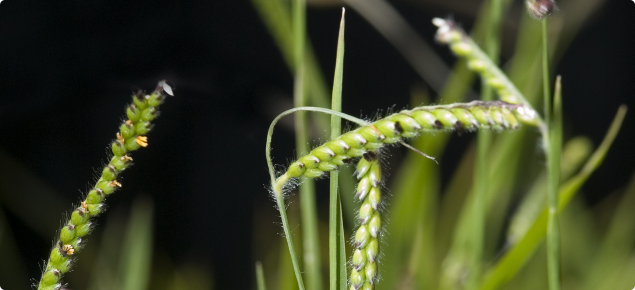Features
Signal grass has the following features:
- a slowly creeping grass which can form a dense sward
- grazing-tolerant once established
- tolerant of acid soils and high soil aluminium
- poor cool season growth and is sensitive to frosts
- contains high to very high concentrations of steroidal saponins which can cause secondary photosensitisation in stock
- can act as insurance against establishment failure following sand infill due to strong winds after seeding.
Signal grass (Urochloa decumbens formerly Brachiaria decumbens) originates from open grasslands on the Great Lakes plateau in Uganda and the surrounding countries. It is now widely sown in central Brazil where 40 million hectares of the savannas have been sown to Urochloa-Brachiaria species. Signal grass prefers the wet tropics, but has reasonable drought tolerance as it is adapted to areas with a dry season up to 4–5 months.
Signal grass is very sensitive to cold and frost and will not persist in areas that receive frequent frosts. In field trials signal grass has not persisted over winter on the south coast of WA, but showed some potential on well-drained sandy soils in the northern agricultural region in areas with mild winters and a low incidence of frosts.
Description
Signal grass can be described as:
- a low to medium height (30–45cm), slowly creeping grass (stoloniferous) that can form a dense sward under ideal growing conditions - but in the WA environment, it generally acts like a bunch grass
- weakly stoloniferous with trailing stems that can root at the nodes
- the stems are hairy with leaves 8–10mm wide and often of light-green colour
- the seed head is arranged like a railway signal with 2–5 racemes (2–5cm long).


